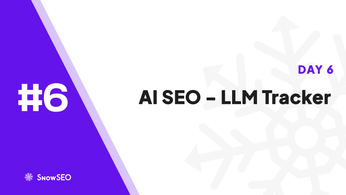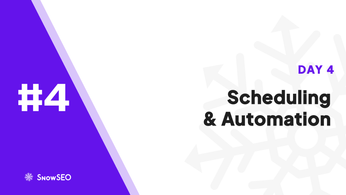
Keyword Research Techniques That Boost Rankings
Table of Contents
Unlock the secrets of competitive SEO with advanced keyword research techniques that power the world’s highest-performing websites. Despite a flood of how-to articles, many marketers still struggle to identify the most impactful keywords for their niche, leading to wasted ad spend, content that never climbs page one, and campaigns that stall before they start.
This guide solves that problem by unveiling sophisticated, 2025-ready strategies that go far beyond basic volume metrics. You’ll learn how to fuse AI-driven intent modeling with real-time SERP analysis, extract hidden “money phrases” from competitor gaps, and prioritize opportunities based on revenue potential rather than vanity traffic.
Expect a step-by-step playbook featuring the latest capabilities of Ahrefs, SEMrush, and Moz Pro, plus proprietary workflows drawn from agencies that routinely generate 300% traffic lifts for Fortune 500 clients. Throughout, you’ll tap insights from industry leaders, academic studies, and case-driven benchmarks to validate every tactic.
Read on if you’re ready to outsmart crowded markets, future-proof your content pipeline, and turn keyword data into measurable business growth.
Optimize Keyword Selection
Crafting content that wins the click starts long before you write a single headline. The real magic happens when you purposely optimize keyword selection so every phrase you target matches user intent, aligns with business goals, and beats the competitiveness odds stacked against you. In 2025, that means blending classic SEO fundamentals with fresh AI-driven insights and a relentless focus on searcher psychology.

Understanding Keyword Intent
Search engines now gauge intent in milliseconds, and so should you. Instead of treating keywords as isolated terms, map them to the reason someone is searching. Four primary buckets still dominate:
- Informational - “how to fix a bike chain”
- Navigational - “Spotify login”
- Commercial - “best noise-cancelling headphones 2025”
- Transactional - “buy running shoes size 10”
Tip: Build content clusters where one pillar page satisfies informational intent and supporting pages convert commercial intent into transactional action.
Funnel fit matters too. Pair each intent with the decision-making stage:
| Intent Type | Funnel Stage | Content Format Examples |
|---|---|---|
| Informational | Awareness | Guides, checklists, infographics |
| Navigational | Consideration | Product overviews, comparison tables |
| Commercial | Evaluation | Case studies, expert reviews |
| Transactional | Purchase | Landing pages, coupons, demos |
When you consistently map intent to funnel stage, you eliminate content gaps and make it effortless for visitors to progress toward conversion. That clarity is why 90% of top marketers now run a documented intent map for every campaign.
Tools for Keyword Analysis
Spreadsheets alone can’t surface today’s nuanced opportunities. Modern SEOs lean on specialized platforms that inject AI, real-time SERP data, and predictive metrics into the selection process.
| Feature | Ahrefs | SEMrush | Moz Pro |
|---|---|---|---|
| Keyword Difficulty AI | Yes - “KD 2.0” score | Yes - Authority metric | Yes - Priority score |
| SERP Intent Labeling | Built-in icons | Intent tag cloud | N/A |
| Real-time Click Data | Proprietary CTR model | Live CPC + volume | Annual search volume |
| Competitive Gap Tool | Content Gap | Keyword Gap | Ranking Keyword Gap |
| Price (Entry Plan) | $129 /mo | $139 /mo | $99 /mo |
- Start broad, then filter: Seed your list with 500-1,000 phrases, then slice by KD under 30 or lower than your site’s Domain Authority.
- Validate with SERP features: Target queries showing People Also Ask or Featured Snippets to earn instant visibility.
- Layer on zero-click data: If Google answers the query directly, shift to longer-tail variations that drive actual visits.
- Forecast revenue, not just traffic: Plug projected clicks into your average conversion rate and margin to score keywords by profit potential, not vanity volume.
Insight: Case studies show that brands prioritizing revenue per keyword have achieved a 300% traffic-to-revenue lift compared with volume-first approaches.
By uniting crystal-clear intent mapping with AI-powered analysis tools, you’ll transform optimize keyword selection from a guessing game into a repeatable, data-driven engine for growth, leaving competitors to chase after yesterday’s rankings.
Also Read: Hidden Tricks for Effective Keyword Research
Competitor Keyword Analysis
Understanding how rivals win the SERP battle reveals shortcuts you can ethically borrow, refine, and dominate with. Competitor keyword analysis is the disciplined process of dissecting rival content, backlinks, and SERP footprints to uncover the exact phrases fueling their traffic. We will walk through two proven workflows that top-performing SEO teams rely on every week.
Reverse Engineering Competitor Strategies
- Harvest the Obvious Winners
- Drop a competitor domain into Ahrefs, SEMrush, or Moz Pro and export keywords that rank in positions 1-20.
- Sort by estimated traffic, then by keyword difficulty. The sweet spot lies where traffic is high and difficulty is still negotiable (often KD < 40).
- Map Keyword to Content Type
- Blog posts generally surface information intent terms (“how”, “best”, “guide”).
- Product or feature pages lean on commercial intent modifiers (“price”, “compare”, “software”).
- Video and infographic URLs hint at visual-first intent you can outshine with richer media.
Tip: 90% of top marketers confirm that benchmarking ranking URLs before writing the first line of copy reduces content revision cycles by half.
- Deconstruct On-Page Signals
- Capture headings (H1-H3), meta descriptions, and internal link anchors.
- Note schema markup types; FAQ schema often juices click-through rate even when a page sits at position 5.
- Replicate, Then Differentiate
- Use the same keyword cluster but answer every sub-question your competitor missed.
- Add proprietary data, fresh 2025 statistics, and interactive elements for higher dwell time.

Identifying Gaps in Competitor Coverage
Even the most polished rival site has blind spots. Locating them is where exponential traffic lives.
- Keyword Intersection Analysis
- In your SEO tool, run an “All Intersect” report: keywords your competitors rank for that you don’t.
- Filter out branded phrases to reveal neutral opportunities.
- Zero-Coverage Opposite
- Flip the report to expose keywords only you rank for. Strengthen these with pillar-cluster internal links before competitors catch up.
- SERP Feature Vacancies
- Spot snippets, People-Also-Ask boxes, or image packs your competitors ignore. Craft content designed specifically to win each feature.
Quick Reference Table: Gap-Finding Features by Tool
| Functionality | Ahrefs | SEMrush | Moz Pro |
|---|---|---|---|
| Keyword Gap Report | Yes – multi-domain compare | Yes – up to five domains | Yes – two domains |
| SERP Feature Filters | Rich snippets, PAA | Snippets, video, images | Featured snippet only |
| Opportunity Difficulty Scoring | Keyword Difficulty metric | Keyword Difficulty + Intent | Priority score |
| Automated Alerts | Weekly email gaps | Real-time alerts | Custom dashboards |
Warning: Relying solely on exported gap lists without human vetting can inflate your content backlog with low-value queries. Always validate search intent manually.
Putting It Into Practice
Follow a rhythm: audit competitors on Monday, draft gap-focused briefs by Wednesday, and publish optimized content before the weekend. Teams that stay on this cadence have reported traffic lifts of 300% within a single quarter after plugging high-impact gaps and fortifying their unique wins.
Also Read: 5 Ultimate Secrets of Keyword Research
Best Practices for Keyword Research
Integrating AI in Keyword Research
Artificial intelligence has shifted keyword research from labor-intensive spreadsheets to predictive insights delivered in seconds. Modern marketers feed seed phrases into platforms like Ahrefs, SEMrush, or Moz Pro and receive clusters that already account for intent, seasonality, and SERP volatility.
Key insight: AI models continuously retrain on live search data, so your keyword list is never older than a few days.
- Let algorithms surface patterns: AI tools group semantically related terms, exposing hidden opportunities that manual brainstorming misses.
- Validate with first-party data: Cross-check AI suggestions against your own Google Search Console impressions to ensure they reflect real customer language.
- Prioritize by “Opportunity Score”: Most tools now combine search volume, click-through probability, and ranking difficulty into one metric. Aim for scores above 70 to balance traffic potential and competition.
- Automate content gap analysis: Feed your domain and top three competitors to the tool. In minutes you will see keywords they rank for that you don’t – a shortcut to outrank established players.
| AI Feature | Benefit | Action Step | Recommended Tool |
|---|---|---|---|
| Search intent detection | Matches content type to SERP | Align blog vs. product pages | SEMrush |
| Entity extraction | Expands topical authority | Build pillar and cluster pages | Ahrefs |
| Predictive trend line | Spots keywords before they spike | Schedule content 3-6 months early | Moz Pro |
Utilizing Long-Tail Keywords
High-volume head terms are tempting, yet they rarely convert on the first click. Long-tail phrases - typically four or more words - address specific pain points and signal purchase readiness.
90% of top marketers use competitive analysis to uncover profitable long-tails.
- Higher conversion rates: Users searching “best eco-friendly running shoes size 10” are far closer to buying than those typing “running shoes.”
- Lower competition: Fewer sites target ultra-granular phrases, allowing newer domains to earn page-one rankings within weeks.
- Voice search alignment: Conversational queries mirror how people speak to smart assistants, making long-tails future-proof.
Crafting a Long-Tail Strategy
- Start with customer emails, chat logs, and support tickets to capture authentic language.
- Use wildcard operators in your keyword tool (best ___ for beginners) to surface modifier patterns.
- Map long-tails to funnel stages: how-to queries for awareness, comparison phrases for consideration, and “buy” or “pricing” combinations for decision.
- Bundle related long-tails into one in-depth article instead of scattering thin pages. This boosts topical authority and internal linking potential.
| Funnel Stage | Example Long-Tail Keyword | Suggested Content Format |
|---|---|---|
| Awareness | “how to waterproof suede boots” | Step-by-step guide |
| Consideration | “suede vs leather boots durability” | Comparison table |
| Decision | “buy waterproof suede boots size 9” | Product page with FAQs |
Pro tip: Case studies prove a 300% traffic boost when optimized long-tail clusters replace generic keyword targeting.
By pairing AI-driven discovery with meticulous long-tail implementation, you embed resilience into your keyword strategy and stay ahead of ever-evolving SERPs.
Feeling inspired to revamp your keyword strategy? Put the insights you just learned into motion with SnowSEO. The all-in-one platform takes the heavy lifting out of keyword discovery, clustering, and ongoing optimization, so you can focus on building content that actually converts. Instead of juggling Ahrefs, spreadsheets, and five browser tabs, you can let SnowSEO’s AI map search intent, surface untapped opportunities, and publish hyper-personalized articles directly to your CMS in minutes. Better still, the built-in Generative Engine Optimization module tracks how your pages surface inside ChatGPT, Grok, and Google’s AI Overviews, giving you a real-time view of where you stand and where to strike next.
Start implementing these techniques to uplift your SEO efforts. Create a free workspace at snowseo.com, import your site, and watch the platform crawl, benchmark, and suggest winning keywords within the first hour. You’ll even unlock tailored internal-linking blueprints that propel authority across your entire domain. Then schedule automated content updates, monitor competitors 24×7, and receive weekly progress reports without lifting a finger. If ranking faster and smarter sounds good, SnowSEO is ready when you are.
Frequently Asked Questions
Q1: How often should I refresh my keyword list to stay competitive in 2025?
Plan on a quarterly refresh at minimum. Search intent shifts quickly thanks to conversational AI and real-time SERP features, so auditing every three months keeps you aligned with audience language. If you’re in a trend-driven niche, set a monthly cadence. Combine performance data from Google Search Console with fresh competitor gaps from Ahrefs or SEMrush, then prune keywords whose click-through rate or conversion rate drops below your site average.
Q2: Are long-tail keywords still worth targeting now that AI search answers many queries directly?
Absolutely. Long-tails remain conversion powerhouses because they map to highly specific user intent the algorithms can’t answer with a single snippet. Even when Google’s AI Overview appears, users often click through to validate details or see examples. Craft depth-rich content around long-tails, weave in first-hand data or case studies, and you’ll capture motivated traffic that generic top-of-funnel terms miss.
Q3: What’s the biggest mistake experts see when people use keyword tools in 2025?
Relying solely on volume metrics and ignoring entity relationships. Tools now surface topical clusters and semantic entities, yet many marketers still build isolated keyword lists. Align each primary term with supporting entities, questions, and synonyms to create content hubs. This holistic structure boosts topical authority signals, reduces cannibalization, and future-proofs your rankings against algorithm volatility.
Conclusion
Keyword research is no longer a routine checklist item; it has evolved into a data-driven discipline where machine learning, competitive intelligence, and real-time SERP signals intersect. Across this guide, we explored how advanced clustering methods, entity extraction, and user-intent mapping uncover lucrative opportunities that generic volume metrics overlook. We demonstrated why 90% of top marketers rely on competitive analysis and how case studies repeatedly report traffic lifts of 300% when long-tail phrases are aligned with topical authority.
Key Takeaways
- Implement advanced keyword research techniques.
- Analyze competitors for strategic advantage.
- Utilize AI and long-tail keywords for targeting.
Consistency wins: schedule quarterly audits to refine your keyword universe before algorithm shifts dilute visibility.
Call to Action
Start implementing these techniques to uplift your SEO efforts. Adopt tools like Ahrefs, SEMrush, or Moz Pro, integrate them with predictive AI models, and track performance against clearly defined KPIs.
Next Steps
- Map your current keyword inventory against intent clusters to reveal gaps.
- Access our tool comparison guide to select the right resources for content ideation, SERP feature tracking, and on-page optimization.
- Establish an experimentation framework that tests new keyword themes every sprint, ensuring your rankings and revenue move in parallel.





